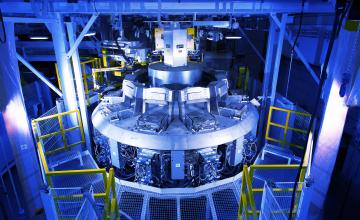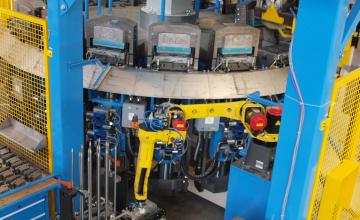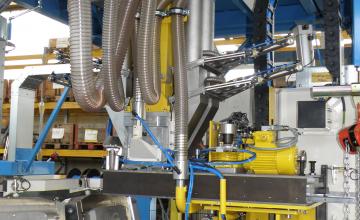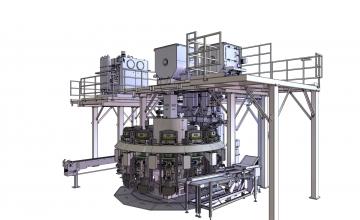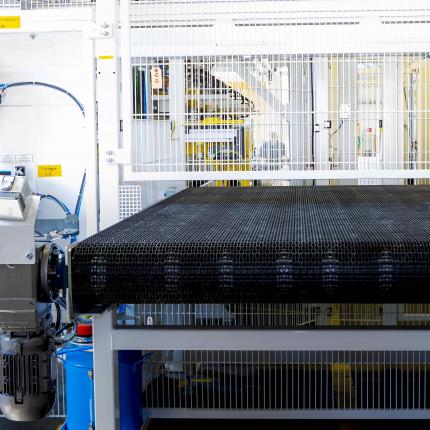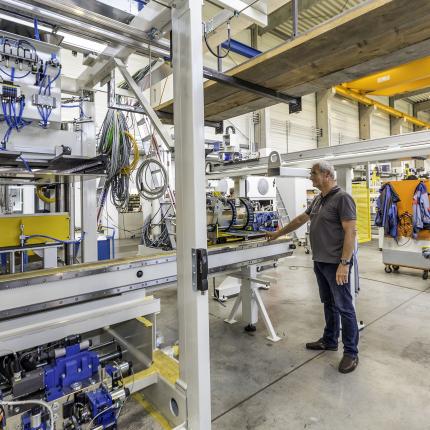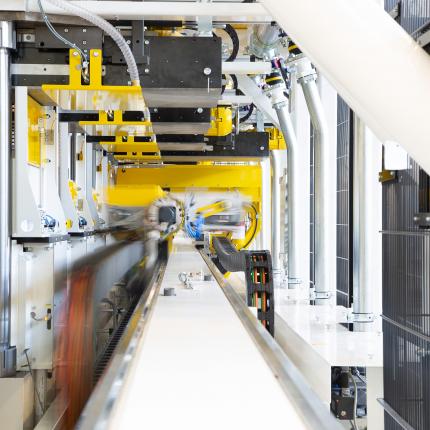Rotary transfer machine
Rotary transfer machines divide the necessary processing steps amongst individual stations. These are subsequently arranged on a so-called indexing table that rotates. The individual stations always carry out the same manufacturing steps, and the product is completely finished during one rotation.
At IAG, this principle is mainly applied for large batches made with friction lining presses. To this end, the individual presses are arranged on a rotary indexing table and pass through these individual stations in the course of one rotation:
- filling with friction material and underlayer
- placement of the back plate
- pressing of the friction lining
- demoulding and removal of the friction lining
- cleaning of the press mould and application of the release agent
The number of presses at the rotary table depends on several parameters such as pressing time and quantity being applied. The number of presses can vary from 4 to 19 stations as required.
However, this principle can also be applied to other areas. Thanks to our many years of experience with rotary transfer machines, we are able to offer solutions that are unique in the market.
A rotary transfer machine exhibits the following characteristics:
- Maximum output
- Cost-effective for large batches
- Low flexibility (other concepts are advantageous here)


